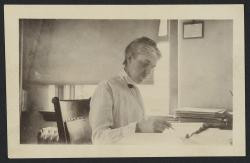Project PHaEDRA
Project PHaEDRA is an initiative by the Wolbach Library at the Harvard-Smithsonian Center for Astrophysics, in collaboration with many partners, to catalog, digitize, transcribe, and enrich the metadata of over 2500 logbooks and notebooks produced by the Harvard Computers and early Harvard astronomers. Our goal is to ensure that this remarkable set of items, created by a remarkable group of people, is as accessible and useful as possible.
Interested in getting our Project PHaEDRA newsletter? You can sign up here!
Questions about our collections? Feedback about educational materials? Email: library@cfa.harvard.edu
Materials Compiled by: Sam Correia and Peggy Wargelin
Project PHaEDRA's collections
Astronomical Observational Images: The Naked Eye through Current Observations
 Project PHaEDRA
Project PHaEDRA
Cecilia Payne-Gaposchkin and the Components of Stars
 Project PHaEDRA
Project PHaEDRA
The Science of Henrietta Swan Leavitt
 Project PHaEDRA
Project PHaEDRA





